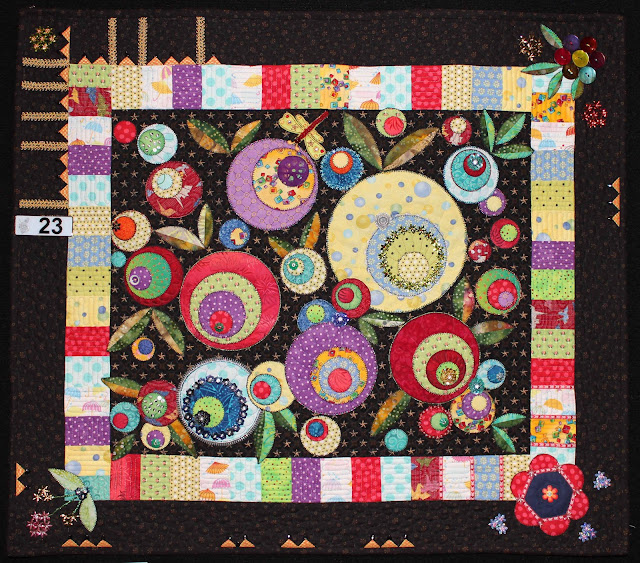What is this girly, traditional-looking quilt thing? I didn't make that did I? Not my style at all!
Yep I did make this, but only as an experiment to get the hang of the quilt as you go technique. I didn't want to use my prints yet until I'd worked it out so I used up some of my hand-me-down fabrics and made this quilt in girly colours which my daughter likes. So as I wouldn't have yet another experiment lying about in a drawer I made this into a cushion cover for her room.
The advantage of quilt as you go is that you don't have to get a whole huge quilt under a domestic machine. You quilt each part separately and join them at the end. I used a sasher from Pauline's Quilters World to make the thin purple strips. Here's a video demonstrating the sasher - it's definitely not as easy as it looks in the video!
I joined my quilt pieces with the seams on the front and then covered them with the sashing. A big advantage for me is that you can cover up all the places where your corners don't match up! Another advantage is that you can make your design up as you go along, it doesn't have to be all planned out in advance. I think this technique will work well for joining some of my monoprints into a bigger piece.
 |
| Seams on the pretty side before the sashing is added. |


























































